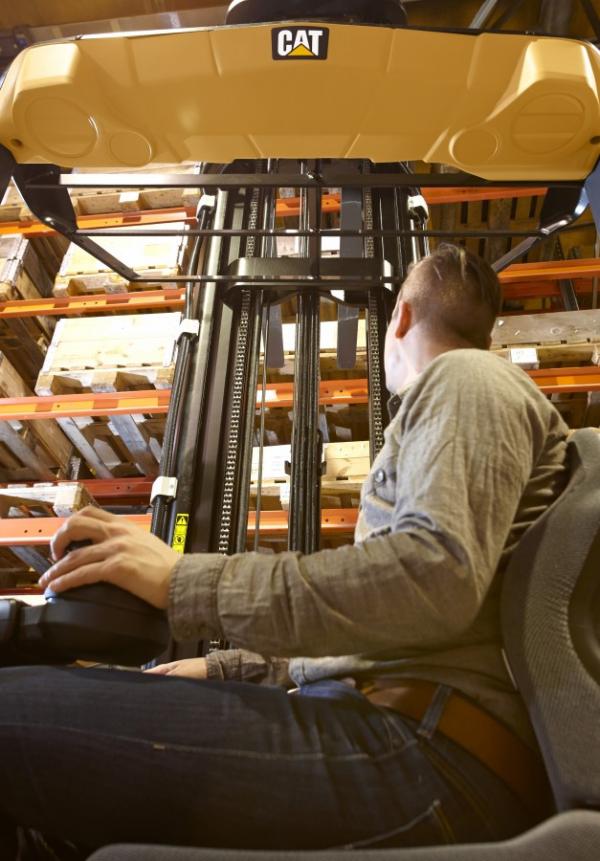The average height of standard pallet racking is about 4 metres. In these kind of warehouses we mostly see standard forklift trucks storing or retrieving pallets. The average turnover is low and the aisle width is comfortably large.
However, in a high bay warehouse, workers could be putting pallets away on pallet racking at 7, 8 or even 10 metres above ground. In these warehouses, performance and productivity are essential and the warehouse manager will be looking for maximum storage capacity, whilst maintaining a high level of throughput. Different from a pure stock warehouse, we now see various storage solutions to suit specific warehouse functions such as automated systems for piece picking, ABC categorizations and order picking areas. Even in the bulk pallet areas for high storage density, where fast storage and retrieval of goods is required, there will be narrower aisles, higher pallet racking and the deployment of reach trucks.
Unlike order pickers, the driver of a reach truck stays at floor level and has to put pallets away on levels which can be at a great height and even transcend an apartment building. If the operator has poor visibility, it may result in pallets falling unexpectedly and damaging goods and the reach truck. Or even worse…
So, how can you make sure the job of handling pallets in a high bay warehouse is carried out safely then? Taking note of the following 5 points will really help improve matters:
- First of all, only use reach trucks designed to maximize the view on high loads. For example, the Cat® reach trucks give operators the best possible view of the fork tips and support legs, for smooth, precise, fast handling and pallet entry – and less chance of damage to loads and pallet racking. Overhead guards should be designed in such a way that they protect against falling goods but still offer unexpected, clear views through the bars. Also pay attention to the design of the mast or the fork carriage. Not all trucks are made equal!
- Use smart features which help in putting the pallets away safely. Have your reach truck equipped with a camera/monitor combination or with a pre-set height selector. Such a selector will help the mast to stop at exactly the right height, thus minimizing any risks.
- Always make sure your reach truck drivers are well trained for working in a high bay warehouse.
- Some reach trucks also offer features that smooth out mast movements making it easier for the operator to move items around. For example, the Responsive Drive System (RDS) on the Cat® reach trucks. This functionality evens out the starts and stops of all the reach movements. Alternatively, look for forklifts which dampen the typical swaying movement of masts that are elevated at serious heights. It is incredible how much time is saved by such a feature.
- Finally, include safety measures involving the pallet racking itself. Use pallet stops at the back, for example. Even paying attention to the specific colour of the beam can make the difference between a guess and a safe bet.
